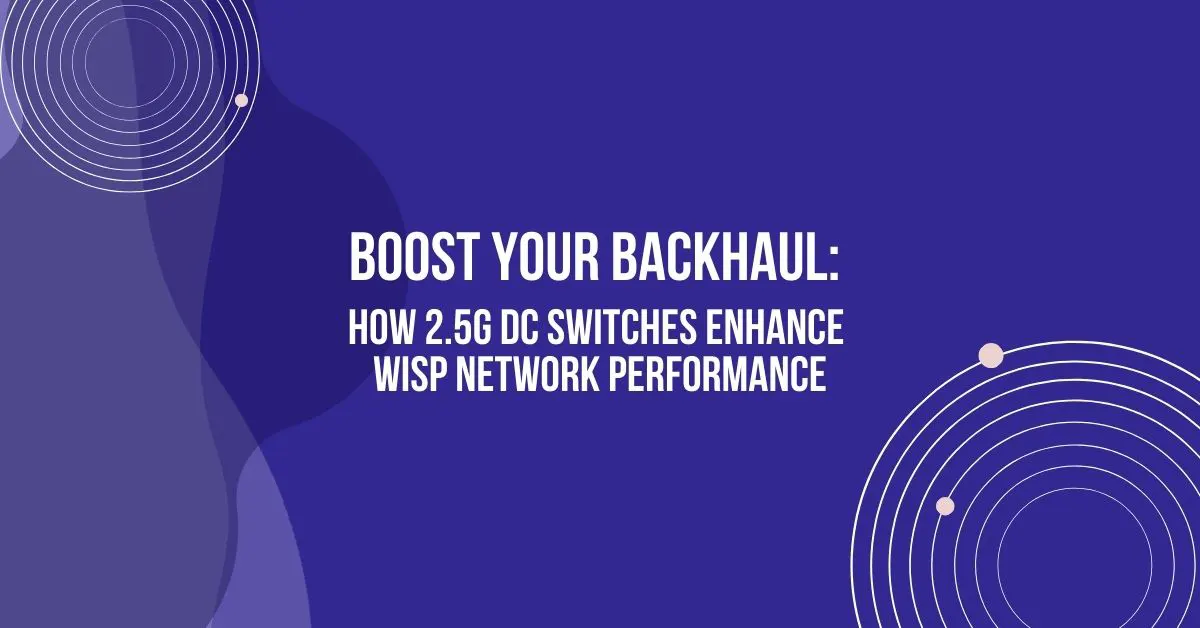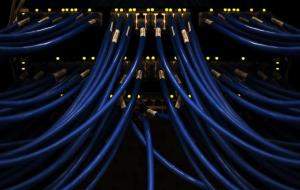For Wireless Internet Service Providers (WISPs), delivering consistent, high-speed service depends heavily on the quality of the backhaul infrastructure. As subscriber demand grows and more devices connect to the network, traditional gigabit switches can become a bottleneck. Enter the 2.5G data center (DC) switch—an ideal balance between cost, performance, and scalability.
In this article, we’ll explore how a 2.5G backhaul upgrade can significantly improve throughput, reduce latency, and future-proof WISP networks. We’ll also look at real-world examples and performance benchmarks that demonstrate how 2.5G DC switch performance can optimize WISP infrastructure.
Why 2.5G Is the Smart Middle Ground
While 10G switches offer top-tier performance, they are often prohibitively expensive and require Cat6a or fiber cabling, making them less practical for many WISPs. 2.5G switches, on the other hand, deliver 2.5 times the speed of traditional gigabit at a fraction of the cost of 10G—and they do it over existing Cat5e cables.
Key Benefits:
- Cost-Effective Performance: No need to re-cable with Cat6a or fiber.
- Future-Ready: Supports higher throughput for growing subscriber bases.
- Easy Upgrade Path: Many 2.5G switches are plug-and-play with gigabit infrastructure.
Benchmarking 2.5G vs Gigabit Backhaul
| Metric | Gigabit Switch | 2.5G DC Switch |
| Maximum Throughput | ~1 Gbps | ~2.5 Gbps |
| Latency Under Load | 5–10 ms | 1–3 ms |
| Port Aggregation Support | Limited | Often Included |
| Cable Requirements | Cat5e+ | Cat5e+ |
These numbers demonstrate how upgrading to 2.5G DC switches helps WISPs handle higher data loads and reduce bottlenecks without the high investment of 10G solutions.
Real-World Application: High-Density Apartment Complexes
One WISP operating in a metro area with several high-density apartment complexes faced congestion and service interruptions during peak hours. Their data center relied on outdated gigabit switches, which were ill-equipped to handle modern data demands.
After switching to 2.5G DC switches:
- Data throughput increased by 150%.
- Peak-time latency dropped by over 60%.
- Customer complaints regarding buffering and slow speeds decreased significantly.
This WISP backhaul upgrade allowed the provider to scale their services without a full infrastructure overhaul.
Optimizing WISP Networks with 2.5G DC Switches
As WISPs continue to expand coverage and increase bandwidth, optimizing backhaul is critical. 2.5G switches offer a compelling mid-tier solution for:
- Feeding wireless towers or sector APs.
- Aggregating customer traffic at distribution points.
- Handling local traffic in high-demand zones (e.g., apartment buildings, business parks).
Conclusion
If your WISP is feeling the strain of growing bandwidth demand, a 2.5G backhaul upgrade may be your best move. These switches provide an affordable way to optimize WISP network performance, reduce latency, and scale for future needs.
By making the switch, you can achieve near-enterprise-grade performance while keeping your infrastructure upgrade within budget. Explore the range of 2.5G DC switch performance options available, and power up your network without breaking the bank.
Upgrade now and prepare your WISP for the future of high-speed networking!



